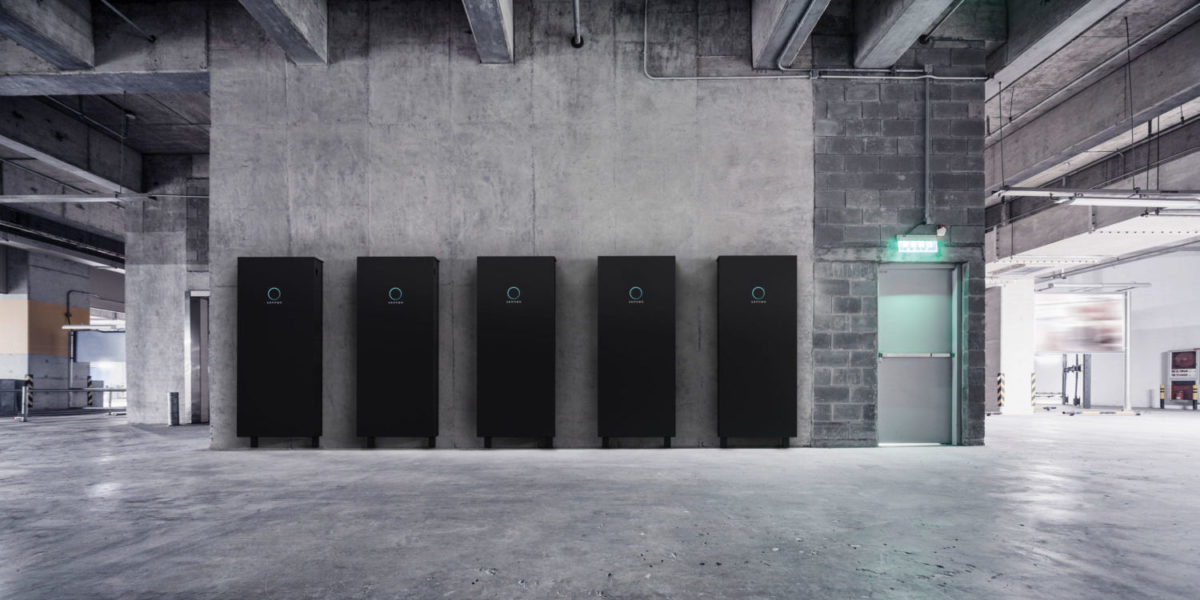From pv magazine Germany.
Scientists at JARA Energy, a merger of RWTH Aachen University and research institute Forschungszentrum Jülich, have published detailed analysis and a comprehensive dataset of 2019 storage market development in Germany. They examined market development and prices in residential photovoltaic storage, industrial storage, and utility scale storage facilities last year.
In the residential storage segment, which includes all battery systems with a capacity of up to 30 kWh, previous years' growth continued. In 2019, around 60,000 photovoltaic home storage systems with a total power capacity of about 250 MW and a storage capacity of 490 MWh were added in Germany. Thereby, at the end of 2019, some 185,000 systems with a cumulative capacity of around 750 MW and 1,420 MWh storage capacity had been installed. Prices for the market's most popular storage technology – lithium-ion – have fallen by a further six percent between 2018 and 2019, to around €1,100/kWh. The scientists calculated that reduction was for medium-sized home storage units of 5-10 kWh. Due to the more favorable prices and increasing demand for rooftop PV, the researchers expect the residential storage market to continue to grow significantly this year. “We can see that the industry has continued to grow despite the ongoing Covid-19 pandemic and has been able to meet the high demand for PV home storage systems,” says Jan Figgener, of RWTH Aachen University. From 2021 onwards, the segment could benefit from the systems that exceed Germany's feed-in tariff subsidy and are retrofitted with storage units.
Popular content
According to the analysis, through May 2020 more than 90,000 home storage units had already been entered into the market master data register of federal network agency the Bundesnetzagentur, where storage units must be registered. For industrial storage facilities, with capacities of 30 kWh-1 MWh, the researchers recorded around 700 entries by the end of 2019, with a total power capacity of around 27 MW, for a cumulative total capacity of more than 57 MWh. However, no comprehensive estimates of the market could be derived from the entries. After all, about half of the industrial storage units listed in the market data register had been installed in 2019. The researchers expect demand to continue to rise this year and in the coming years.
In 2019, there were only nine new project entries for large storage facilities, with a capacity of 1 MWh or more. Accordingly, systems with 54 MW of power and 62 MWh of storage capacity went into operation last year. These figures point to a sharp decline in new construction in a segment which, by the end of 2019, had a total of 68 large storage facilities with cumulative power of 460 MW and storage capacity of around 620 MWh in Germany. The researchers explain the declining market development as down to lower prices in the market for primary control reserve. Average weekly prices had fallen from less than €1,500 per megawatt last year to around €1,000/MW at the beginning of 2020. This makes the market increasingly unattractive for new participants, the researchers write in their analysis. In addition, the federal network agency has approved two pilot projects for so-called “network boosters” with 100 MW/100 MWh and one with 250 MW/250 MWh. These are expected to go into operation in 2022 and could significantly boost the large storage market again. “The innovation tenders, which were first procured in September 2020 and which, according to the EEG draft, will also be a fixed component of the tendering procedures in the coming years, will also give the large storage market a further significant boost – so it remains exciting,” said Figgener. A finding of the analysis was that lithium-ion batteries remain the leading technology in all market segments. New battery technologies have so far played only a minor role in projects.
This content is protected by copyright and may not be reused. If you want to cooperate with us and would like to reuse some of our content, please contact: editors@pv-magazine.com.



By submitting this form you agree to pv magazine using your data for the purposes of publishing your comment.
Your personal data will only be disclosed or otherwise transmitted to third parties for the purposes of spam filtering or if this is necessary for technical maintenance of the website. Any other transfer to third parties will not take place unless this is justified on the basis of applicable data protection regulations or if pv magazine is legally obliged to do so.
You may revoke this consent at any time with effect for the future, in which case your personal data will be deleted immediately. Otherwise, your data will be deleted if pv magazine has processed your request or the purpose of data storage is fulfilled.
Further information on data privacy can be found in our Data Protection Policy.